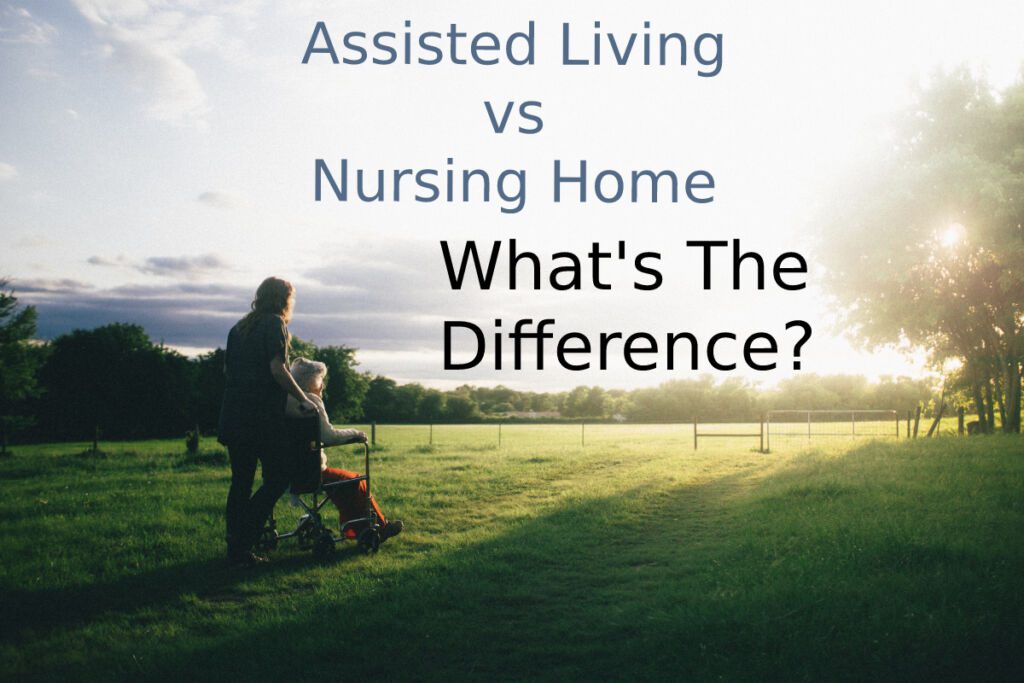Difference Between Assisted Living and Nursing Home

Assisted living facilities and nursing homes are two different types of long-term care services that can provide the senior population with support, amenities, and access to around-the-clock medical care. While they both offer similar services and accommodations, some key differences distinguish them from one another. Below, we’ll summarize the difference between assisted living and nursing home facilities so you can make an informed decision on which one is best for you or your loved one.
Defining Assisted Living Communities
Assisted living facilities are designed to provide seniors with the support they need while still allowing them to maintain a certain level of independence. These facilities offer residents a place to live, as well as services such as meal preparation, recreational activities, housekeeping, and laundry service, help with daily tasks like bathing and dressing, transportation, and more. Assisted living communities are typically less expensive than nursing homes and provide a more home-like atmosphere.
Defining Nursing Homes
Nursing homes, on the other hand, are designed for seniors who need access to more medical care and assistance with daily activities due to physical or cognitive limitations. Nursing homes offer 24-hour medical supervision and skilled nursing care, as well as other services like physical therapy and occupational therapy.
In addition, these facilities typically provide more social opportunities and activities than assisted living facilities.
Differences in Services and Amenities Offered
An assisted living community generally offers fewer medical services than nursing homes, but they often have amenities such as beauty salons or barbershops, libraries, game rooms, access to fitness centers and swimming pools, restaurant-style dining, and more.
Nursing homes offer many of the same amenities that assisted livings have but also include medical services such as physical therapy, occupational therapy, speech therapy, and other specialized care that assisted living facilities typically don’t offer.
What Are the Qualifications for Admittance into an Assisted Living Facility?
Assisted living facilities generally require applicants to be at least 55 years of age, able to care for themselves or with the assistance of a family member or caregiver, and in relatively good health. Nursing homes typically accept patients who are 65 years of age or older and need more medical attention than what an assisted living facility can offer.
Nursing homes may also accept younger adults with disabilities. Ultimately, the decision on which type of facility is best for you or your loved one should be made with the help of a qualified healthcare professional.
Medicare vs Medicaid Coverage
Medicare does not cover the cost of assisted living facilities, but it does cover some of the expenses associated with nursing homes. Medicaid may help to cover the costs for both types of facilities, depending on eligibility requirements and state regulations.
About Medicare
Medicare is a federal health insurance program that provides coverage for hospital care, doctor visits, preventive services, and prescription drugs. It does not cover long-term care or custodial care services at an assisted living facility or nursing home.
About Medicaid
Medicaid is a joint federal and state program that helps to cover the cost of medical care for low-income individuals. It can help cover the costs of assisted living facilities and nursing homes, depending on eligibility requirements. Eligibility criteria vary from state to state, so it’s important to check with your local Medicaid office before applying for coverage.
Cost Comparison Between Assisted Living and Nursing Homes

The cost of assisted living and nursing homes can vary depending on the services offered, but in general, nursing homes normally cost more than assisted living facilities. This difference in price is reflective of the increased medical care and amenities offered in a nursing home versus an assisted living facility.
The cost of assisted living and nursing homes can vary depending on the services offered and the specific location. Assisted living facilities typically range from $2,000 to $5,000 per month, while nursing homes can cost anywhere from $7,000 to $12,000 or even more.
Ultimately, the difference between assisted living and nursing homes depends on the individual needs and preferences of the senior. Assisted living facilities offer seniors more independence and amenities than nursing homes but at a lower cost. Nursing homes provide comprehensive medical care and skilled nursing services at a higher cost. Carefully consider all the options and make an informed decision on which one is right for you or your loved one.
When it comes to choosing between assisted living and nursing homes, there’s no one-size-fits-all answer – it ultimately depends on the individual needs of the senior citizen. However, being aware of the difference between the two can help you make an informed decision.
Differences in Care Levels Provided
Assisted living facilities generally provide lower levels of care than what is offered in a nursing home. Assisted living facilities do not typically provide skilled medical care, though they may offer access to some medical services like medication management and assistance with activities of daily living. Nursing homes provide around-the-clock professional nursing care that can include specialized treatments such as dialysis or tube feeding.
Socialization Opportunities Available at Each Facility
Both types of facilities offer similar socialization opportunities for seniors, such as organized activities, field trips, and entertainment. However, nursing homes may have more amenities and activities available due to their larger size and staff. Assisted living facilities are often smaller in scale with fewer staff members and may not offer the same variety of socialization options as a nursing home.
For instance, at Azalea Trail Nursing Home here in East Texas, we offer a variety of activities such as:
- Religious Services & Devotionals
- Live Music Performances
- Puppet Shows
- Pet Therapy Sessions
- Beauty & Barber Shop Services
- Bingo & Poker Night
- and much more!
At Azalea Trail, we provide a warm and welcoming environment where seniors can socialize and enjoy every day.
Benefits of Choosing an Assisted Living or Nursing Home for Long-Term Care Needs
When it comes to deciding whether an assisted living facility or a nursing home is the right choice for long-term care needs, it’s important to consider the difference between these two types of facilities. Both options offer seniors access to quality care and services, but each offers different amenities and levels of care. Ultimately, the decision should be based on the individual’s needs and preferences.
Contact Us today at Azalea Trail Nursing Home to see how our Facility aligns with your needs!

FAQs
Is senior living and assisted living the same thing?
No, senior living and assisted living are not the same things. A senior living community is a more general term that encompasses both assisted living facilities and nursing homes. Assisted living facilities provide independent living with access to some medical care and services, while nursing homes provide more intensive levels of care for seniors who need access to around-the-clock professional nursing care.
What happens when assisted living is not enough?
When assisted living is not enough, a nursing home may be the best option for long-term care needs. Nursing homes provide 24-hour medical supervision and skilled nursing care, and they offer more social opportunities and activities than assisted living facilities.
What are the pros and cons of assisted living?
Pros of assisted living include access to medical care and assistance with activities of daily living, more opportunities for socialization, and the chance to live in a home-like environment. Cons can include higher costs than nursing homes and fewer medical services available.
Who is ultimately responsible for everything that happens in an assisted living facility?
The owner and operator of the assisted living facility are ultimately responsible for everything that happens in the facility. Assisted living residents and their families should be aware of all policies, procedures, and regulations set by the state in which the facility is located.
How often are people checked on in assisted living?
The frequency of check-ins at an assisted living facility can vary depending on the policies and procedures set by the owner and operator, but in general, staff members should be checking on residents regularly throughout the day.

I find it surprising how you could use assisted living facilities to provide the support and care your senior relative needs as they get older. I saw online ads that offer these services, and it piqued my interest. I’ll be sure to consider trying this out if I need it someday.
It’s good to know how to differentiate between assisted living and nursing homes. Not long ago, my cousin said that she’s looking for a place to take care of her dad. She and her mom have been taking special care of him for years, even though her mom divorced him around ten years ago. I’m sure my cousin will benefit from your intake of the type of social activities offered by senior living communities.